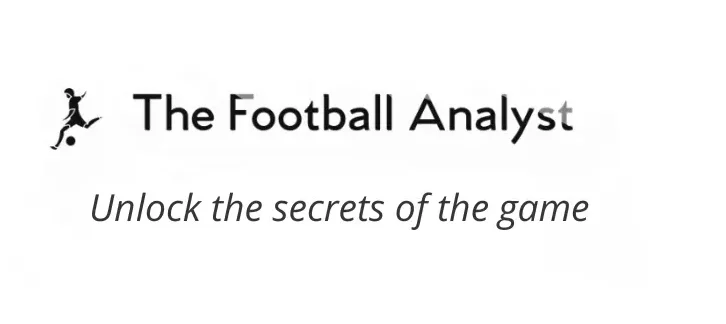In the modern football landscape, where structure, identity, and tactical intelligence define success, few figures represent this evolution better than Sotiris Silaidopoulos. As a coach who prioritizes development over results and system over improvisation, Silaidopoulos has built a growing reputation in Europe — not through buzz or branding, but by creating high-functioning, intelligent teams that understand both the game and themselves.
A New Breed of Coach
Silaidopoulos embodies the modern developer-coach. His identity isn’t shaped around charisma or flash — it’s forged in discipline, clarity, and long-term vision. At the heart of his philosophy lies the belief that footballers should not only be technically competent but also tactically intelligent. For him, talent is never enough; process is everything.
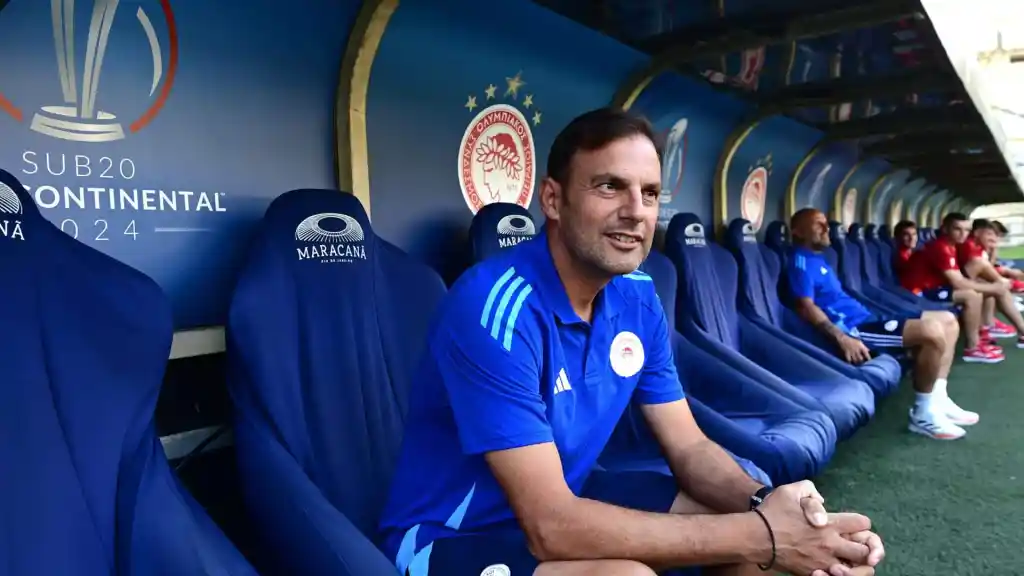
Rather than relying on moments of individual brilliance, Silaidopoulos builds environments where players grow within structure. He blends systemic repetition with adaptable frameworks, giving his teams the platform to express themselves within a collective identity.
Making History with Olympiacos U19
In 2023–24, Silaidopoulos guided Olympiacos U19 to a historic UEFA Youth League triumph — the first time a Greek team had ever won a European trophy at youth level.

Their journey included wins over elite academies:
- Bayern Munich U19
- Inter Milan U19
- AC Milan U19 (final, 3–0)
But this wasn’t a Cinderella story. Olympiacos U19 didn’t just show up — they took control of the matches, playing with clarity, control, and cohesion. They primarily used a 3-4-2-1 formation and shifted into a 5-2-3 shape out of possession. They executed pressing triggers with precision, and every player knew their role. The structure gave them freedom in the final third, but only because they built everything on a solid foundation.
The tactical setup was as much about understanding space and tempo as it was about positions. Two attacking midfielders exploited half-spaces, while wing-backs provided width and verticality. A double pivot balanced build-up play and defensive coverage. It was positional play with purpose, supported by repetition and clarity.
Tactical Blueprint: The 3-4-2-1 System
Silaidopoulos’ tactical foundation revolves around a structured yet flexible 3-4-2-1 system that balances defensive solidity with attacking fluidity. His approach is deeply systematic, designed to create numerical and positional advantages while maintaining compactness and clarity in all phases.
Pressing & Defensive Structure
Out of possession, Olympiacos U19 prioritized winning the ball as high up the pitch as possible. Starting from a 5-2-3 structure, their press was dynamic and aggressive, shifting with the play to maintain compactness while forcing the opponent toward the flanks. The pressing scheme was sharp and intentional, activated through well-defined triggers to suffocate build-up and create immediate transition opportunities.
- When the ball moved, the near-side attacking midfielder pushed up to press the center-back, supported by the wing-back stepping out aggressively.
- Simultaneously, the far-side attacking midfielder advanced on the opposite center-back to prevent switches — effectively trapping the opponent on one side of the pitch.

- The far-side wing-back is ready to jump to the opposite fullback if the opposition manages to switch play.
- Compactness was key — spacing between lines was tight, forcing opponents to either play long or take risks in wide areas.
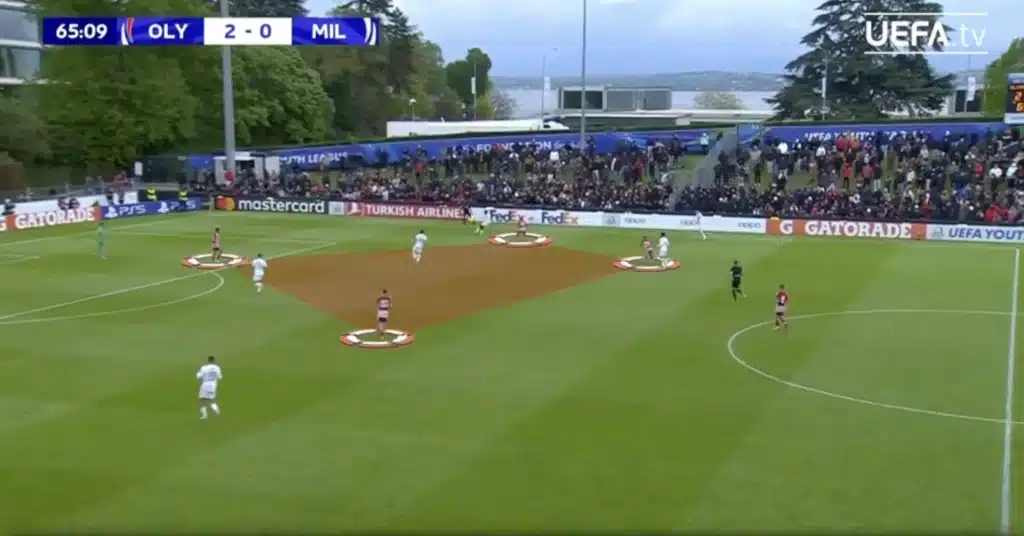
On goal kicks, the team showed a compact 5-2-3 or 3-4-3 shape, depending on the opponent’s setup. The wing-backs adjusted their positioning, aggressively pushing forward or dropping deeper based on the location of the opposition players.
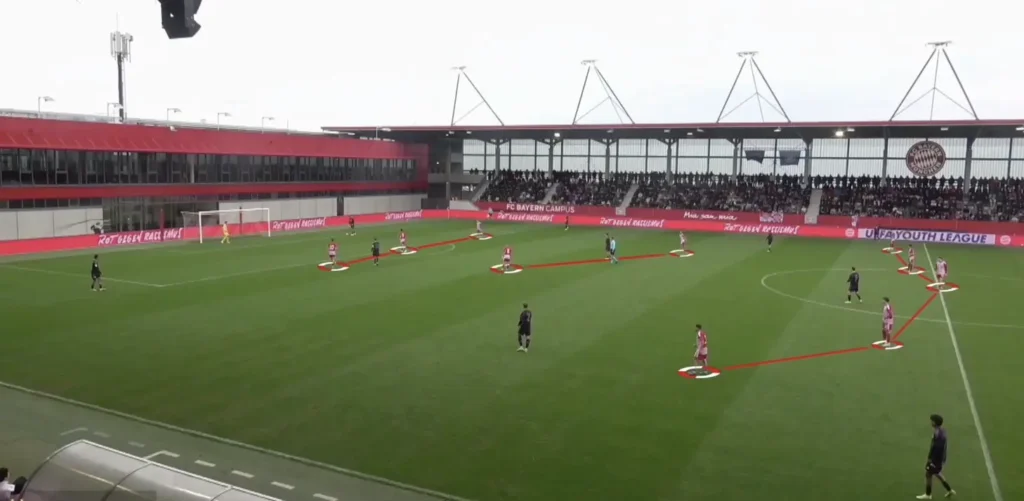
They aimed to force the opponent to one side, using synchronized pressing cues to cut off central passing options and provoke mistakes.
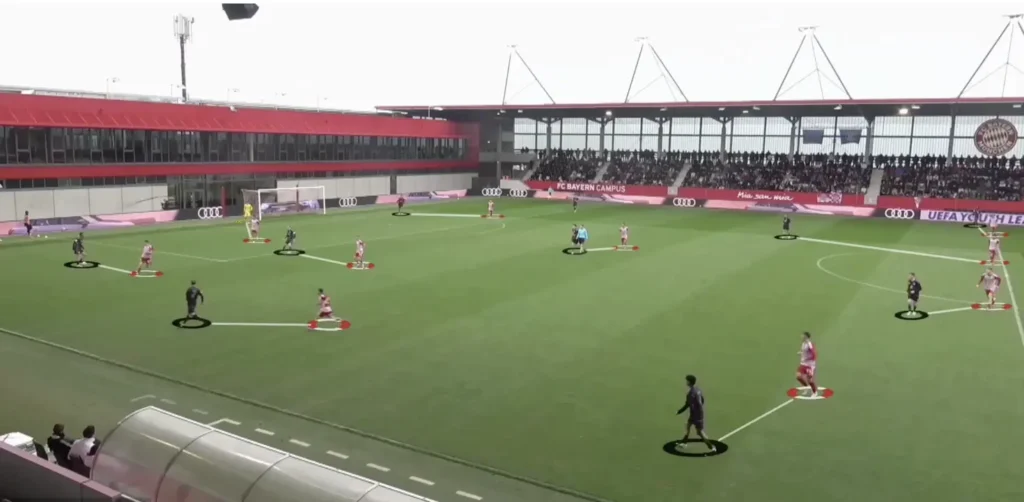
Once they regained possession, they transitioned immediately — usually with a vertical pass to exploit space.
Counter-pressing was also a critical component. After losing possession, four or five of the nearest players swarmed the ball to prevent progression and exploit disorganization. This was not chaotic aggression — it was a structured wave of pressure aimed at rapid ball recovery.
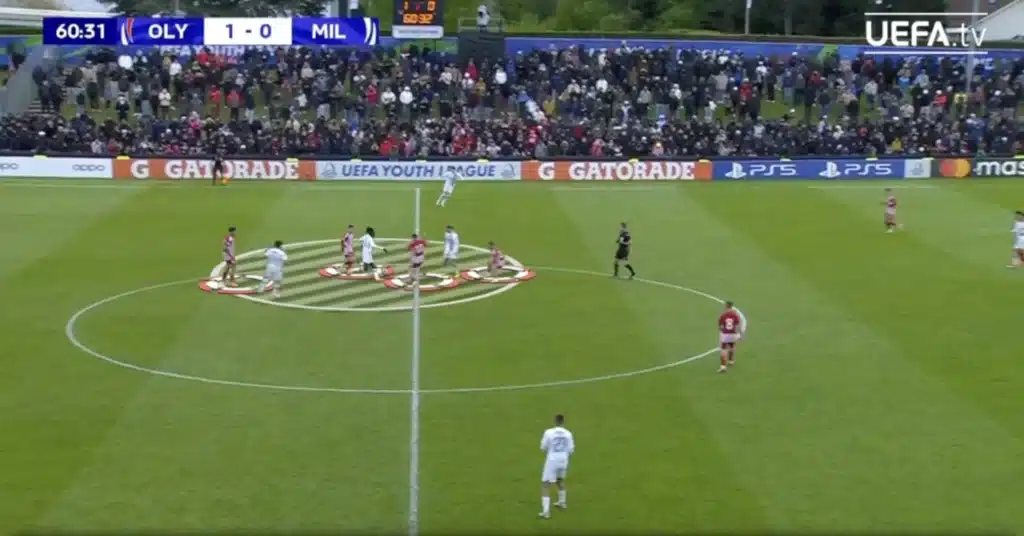
Build-Up Play & Ball Progression
In possession, the team retained the 3-4-2-1 structure, using it as a framework for controlled progression.
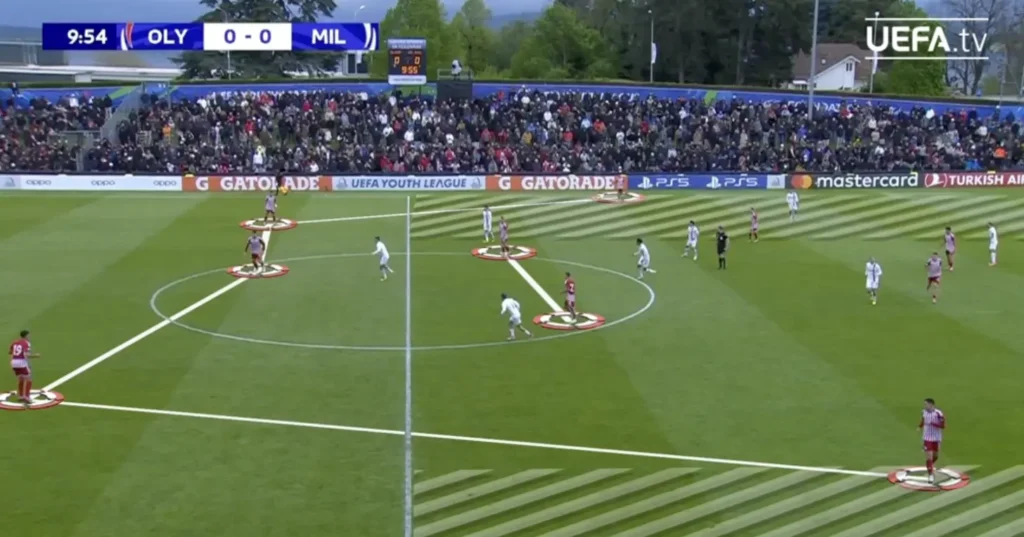
- Central defenders spread wide to open passing lanes, while the double pivot offered vertical and horizontal support.
- One common method of progression involved a central midfielder dropping outside the opposition block to receive the ball from a center-back.
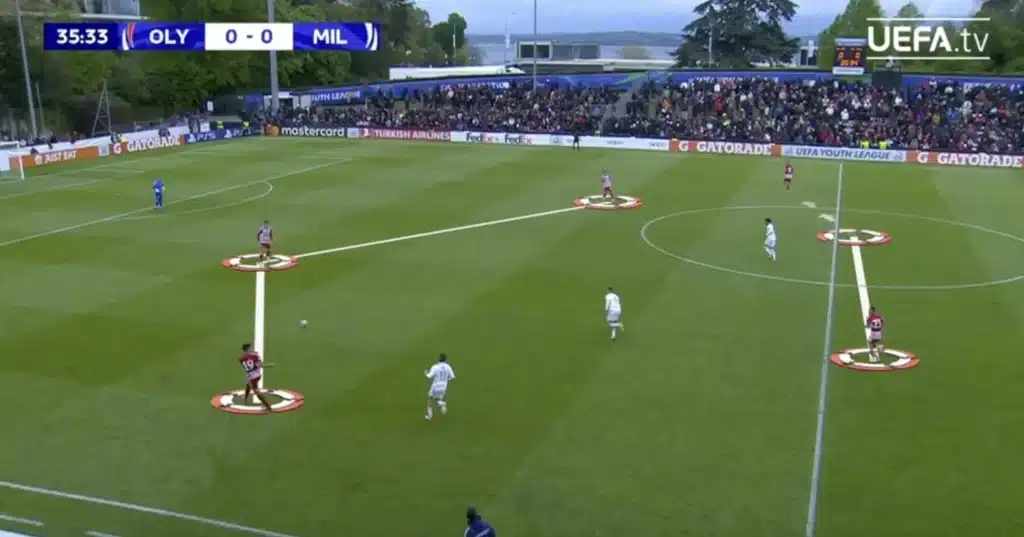
- This created a passing lane that allowed the team to bypass the first line of pressure.
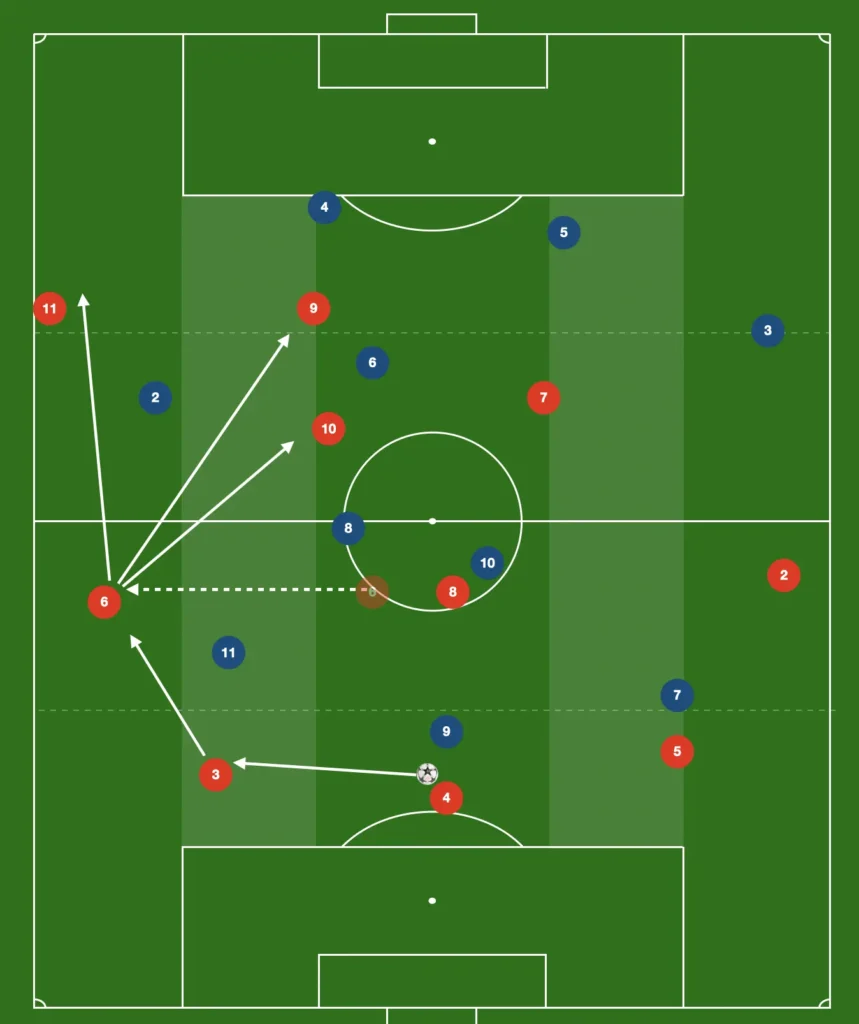
- In particular, if an opposing winger stepped up to press a wide centre-back, the nearest central midfielder would move into the space behind that winger.

- From there, he could receive the ball, turn, and drive the play forward.
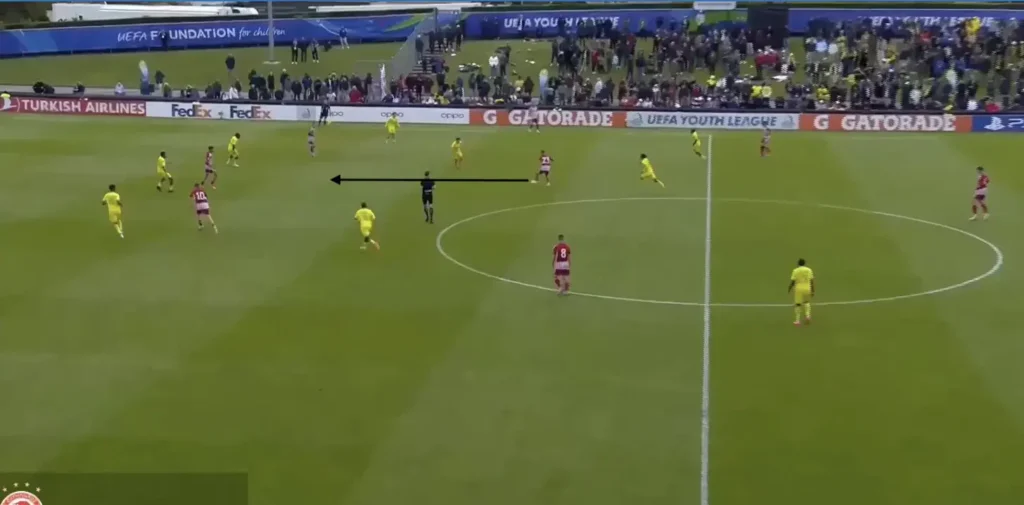
- Both midfielders were comfortable following pressure, moving into new spaces to remain passing options and break pressing structures.
- Wing-backs played a dual role — stretching the opposition horizontally and serving as progression outlets. When receiving the ball, they could:
- Combine inside with a dropping attacking midfielder in the half-space.
- Play vertically in behind to a runner, often the same attacking midfielder timing a diagonal run.
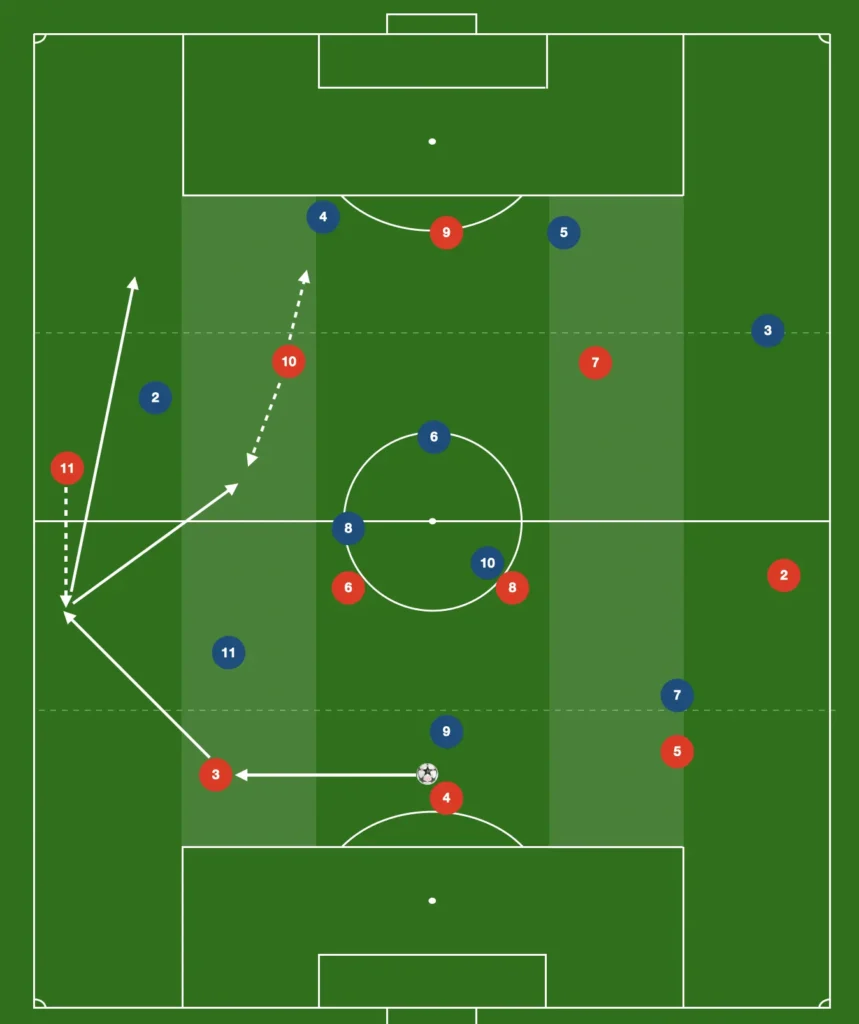
This created a layered build-up system with multiple progression paths: inside via the central midfielders, outside via the wing-backs, and between lines through the advanced midfielders.
Final Third Attacking Patterns
Once in the final third, the focus shifted toward structured creativity.
- He encourages high-speed combinations when breaking in behind, often with multiple players pushing into the box simultaneously.
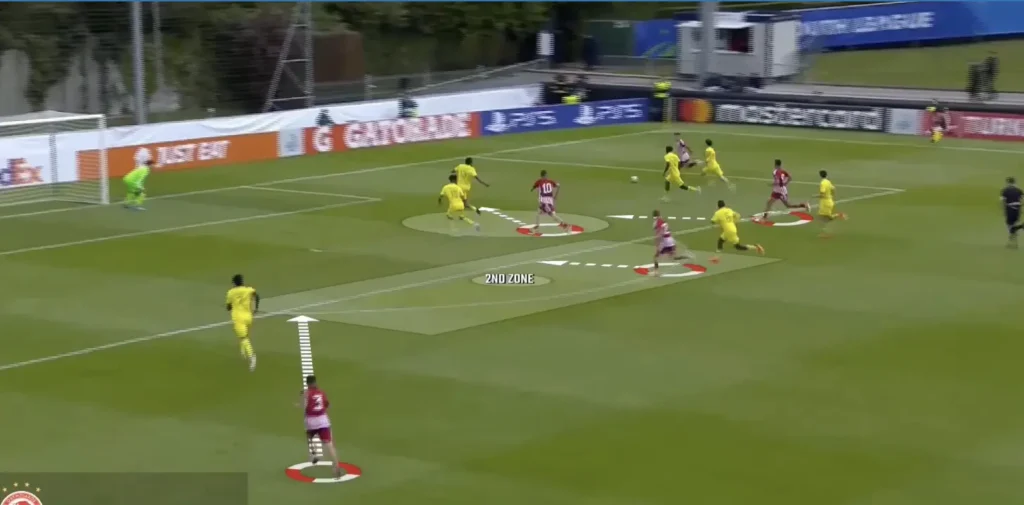
- A consistent theme was occupying the “cut-back space” — one player would always arrive at the edge of the six-yard box, while others made near- and far-post runs.
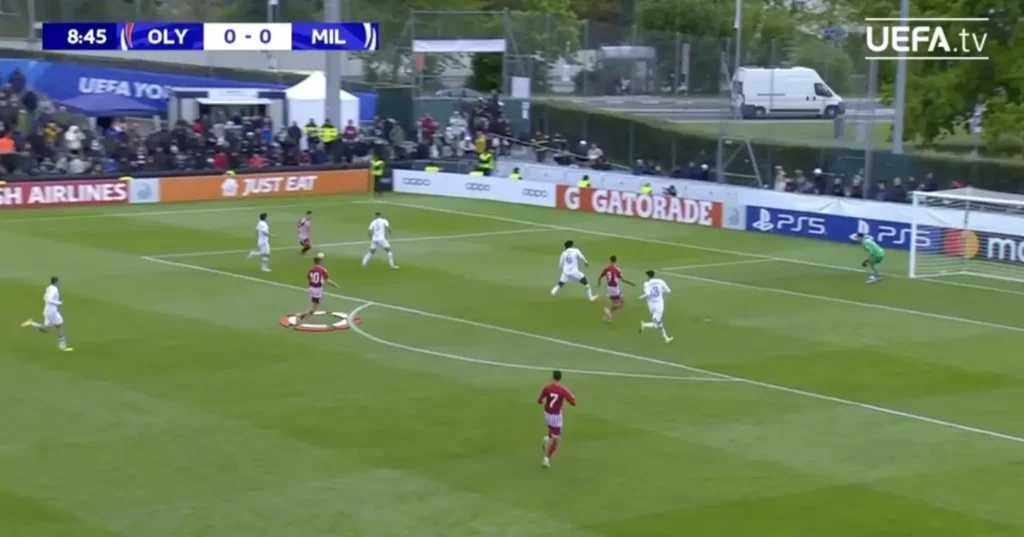
- The two attacking midfielders in the half-spaces often served as the link between midfield and attack, either receiving between the lines or making runs beyond the striker.
These attacking movements were not improvised — they were repeated and embedded in the team’s play. The result was a side capable of breaking down compact blocks while remaining well-structured to counter-press if the attack broke down.
Transition to First Team & Senior Silverware
As a member of the first team coaching staff of José Luis Mendilibar — a Europa League-winning tactician known for his pragmatic methods — Silaidopoulos contributed to yet another historic achievement: Olympiacos’ 2023–24 UEFA Europa Conference League title, secured with a 1–0 win over Fiorentina in the final. It was one of the most successful seasons in the club’s history.
No other coach in Europe has won titles at both youth and senior level in the same season — a testament to his adaptability and coaching range.
Coaching Philosophy
Silaidopoulos views himself first and foremost as a developer. His philosophy revolves around four core ideas:
- Developer first, coach second: Player growth is the primary objective — results follow as a byproduct.
- Game understanding over chaos: Structure, spacing, and decision-making are non-negotiables.
- System adapted to players: Tactics serve the player profile, not the other way around.
- Structured flexibility: Within clearly defined roles, players have freedom to interpret.
This combination of principles allows him to mold versatile midfielders and intelligent defenders — players who can adapt to different systems and respond to in-game demands.
Looking Ahead
Silaidopoulos’ rise is no fluke. His success at both youth and senior levels, his ability to build identities, and his commitment to development over short-term gain all position him as one of Europe’s most exciting coaching minds.
He represents a generation of coaches not chasing tactical trends, but shaping functional systems grounded in clarity and long-term growth. As clubs continue to look for thinkers and builders, not just motivators or tacticians, Sotiris Silaidopoulos is a name we’re likely to hear much more of in the years to come.
